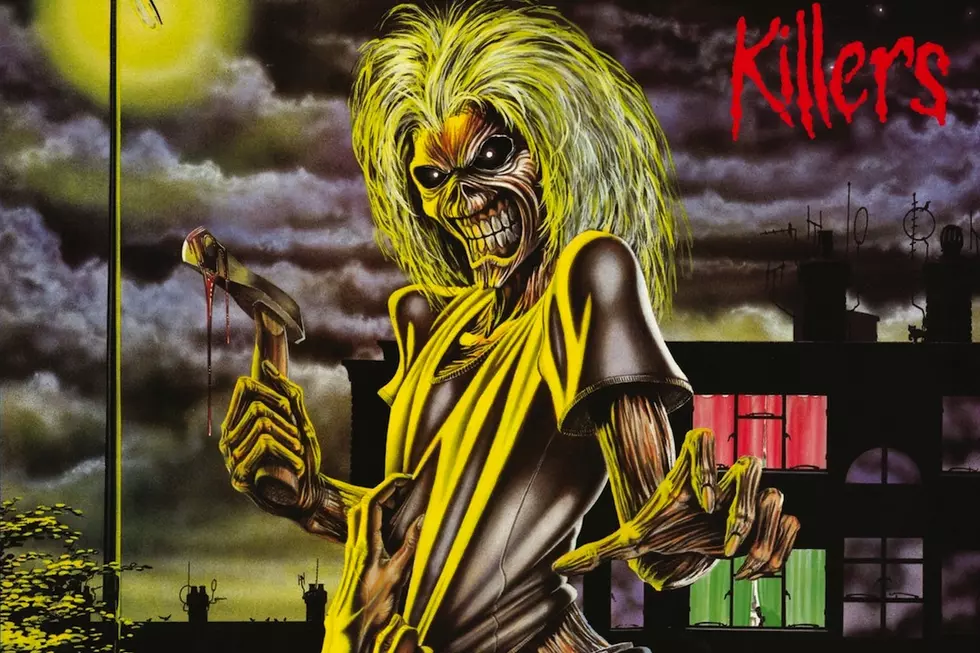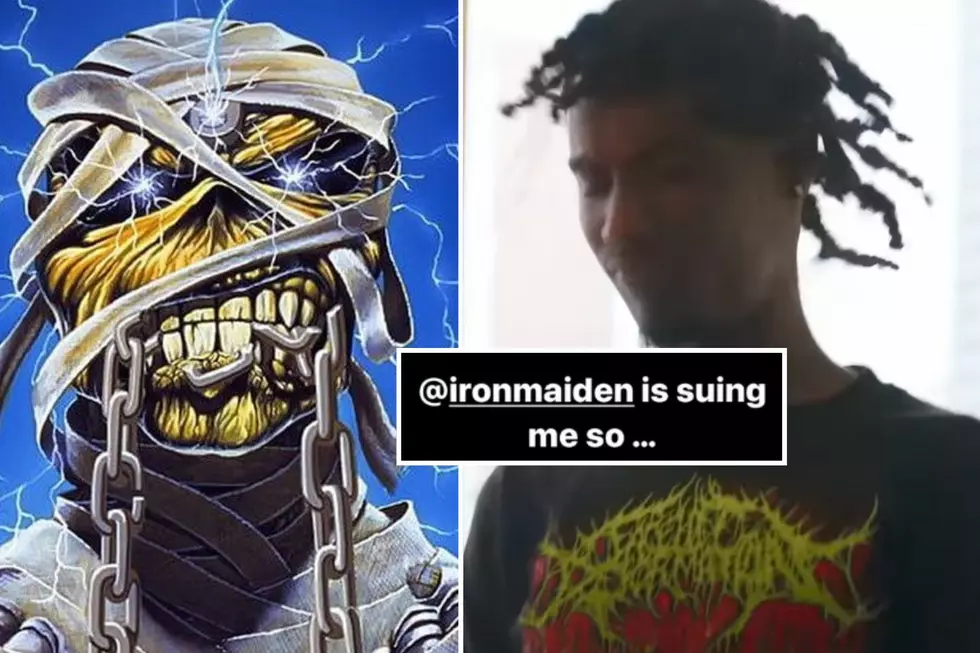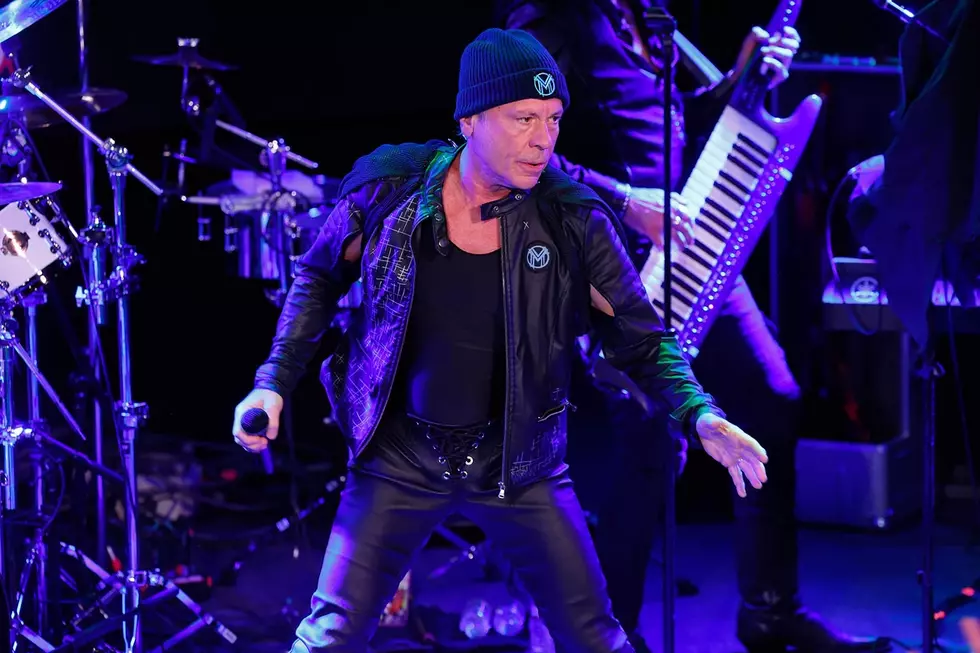
How Iron Maiden Built an Underrated Fan Favorite With ‘Killers’
Released on Feb. 2, 1981, Iron Maiden's Killers is now universally acknowledged as an essential item in any heavy metal discography. Back then, however, critical response was anything but unanimously positive.
In fact, Killers was labeled by some as a sophomore slump – including the reviewer for longtime Maiden champions, Sounds Magazine, who gave it just one-out-of-five stars and called it “well dodgy, more of a failure than a triumph.” Others cited a U.K. chart peak eight positions lower than the prior year’s eponymous debut as evidence of Iron Maiden’s imminent decline. They sharpened their knives to dismiss the band as another New Wave of British Heavy Metal flash-in-the-pan, just like Angel Witch, Diamond Head and other struggling peers.
And, in fairness to this skewed perspective, all but two songs on Killers – "Murders in the Rue Morgue" and "Prodigal Son" – had been bouncing around Iron Maiden’s live repertoire for several years. “Wrathchild,” perhaps the album’s best known cut, had already been recorded in a much rougher, earlier state for the Metal for Muthas compilation, released all of one year earlier. But, as anyone paying close attention could have told these detractors, this song’s two starkly different versions gave a clear illustration of Iron Maiden’s ongoing maturation over the intervening months – as well as the sizable contribution of new producer Martin Birch, who had already worked with name bands like Deep Purple, Rainbow, Wishbone Ash and Black Sabbath, to name but a few.
Ironically, this collaboration between Iron Maiden and Birch could have happened even sooner. “We all wanted Martin for the first album, but thought, like, ‘We’re not worthy,’” Steve Harris’ says in Mick Wall’s authorized biography, Run to the Hills. And Birch, for his part, told Wall that “I went to visit Ritchie Blackmore and he proceeded to play me the first Iron Maiden album, [which] he thought was great, and so did I. About halfway through, he turned to me and said ‘Why don’t you [produce] them?’”
Finally, in December of 1980, Harris and Birch (who'd soon nicknamed "The Headmaster" for his studio strictness) led Iron Maiden singer Paul Di’Anno, guitarists Dave Murray and Adrian Smith (who’d just replaced the dismissed Dennis Stratton), and drummer Clive Burr into London’s Battery studios. A few strenuous weeks later, they emerged with another ironclad clutch of soon-to-be-worshipped heavy metal anthems. It's true that Killers boasted a distinct lack of future Maiden concert staples, but it was destined to be an object of special affection for the band’s most dedicated, diehard fans.
Listen to Iron Maiden Perform 'Murders in the Rue Morgue'
First in line came the anticipation-building instrumental “The Ides of March,” setting up a big payoff from the re-recorded “Wrathchild,” powered by one of heavy metal’s all time greatest bass lines. Next came the equally memorable “Murders in the Rue Morgue,” a textbook sample of Iron Maiden’s early-days knack for crafting catchy marriages of riffs and choruses in concise packages, and then a slew of cuts that average fans may rarely mention but which true fanatics still hold dear. Songs like the galloping “Another Life,” the militaristic instrumental “Genghis Khan,” and the rip-roaring unofficial sequel to “Sanctuary” that was “Innocent Exile.”
Side Two, for its part, swapped unflagging intensity for variety: following up the suspense and grisly terror of the title track with acoustic guitars, ample melodies, and prog-y ambitions on “Prodigal Son,” then another barnstorming gem in “Purgatory” and, finally, the best of all worlds dynamism found on “Drifter.” In America, Killers was released with a bonus track named “Twilight Zone” – which, in the U.K., had served as the LP’s first single, backed with “Wrathchild.” It underperformed, however, stalling at No. 31. That was followed in short order by second single “Purgatory,” which fared even worse – sputtering no higher than No. 52.
This inability to produce a clear-cut hit single no doubt fueled some of Iron Maiden’s naysayers that year; yet the band itself was far too busy to pay them heed. They immediately embarked on an extensive world tour that would cover most of 1981, include the band’s first visit to America, and pair them with the likes of Whitesnake, Motorhead, UFO and Blue Oyster Cult.
They then returned home to England, triumphant but exhausted. Just ahead was the daunting challenge of sacking and replacing well liked frontman Paul Di’Anno, whose relationship with Harris (and, by extension, manager Rod Smallwood) had deteriorated steadily out on tour. That switch ultimately paid off handsomely, however, with the career-energizing arrival of former Samson air-raid siren Bruce Dickinson. This, as we all know, signaled Iron Maiden’s next leap forward, beginning with the following year’s The Number of the Beast. By then, the meager voices of persistent unbelievers from the Killers period would be summarily drowned out by a chorus of acclaim.
As a postscript, let us not fail to celebrate Killers’ stunning, unforgettable cover illustration. Painted as usual by Derek Riggs, it caught the band’s familiar mascot Eddie wielding a bloody hatchet, literally in the act of fulfilling the album title’s threat. As his dying victim collapses to the East London cobblestones, his hands vainly grasping at Eddie’s shirt, our (anti-)hero scowls gleefully back at the voyeuristic listener – along with assorted peeping toms from behind drawn curtains. It's one of heavy metal’s most iconic cover images.
Top 50 Classic Heavy Metal Albums
More From Ultimate Classic Rock









